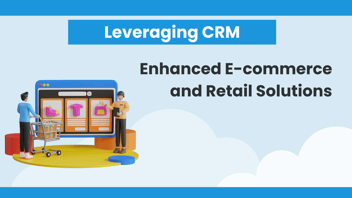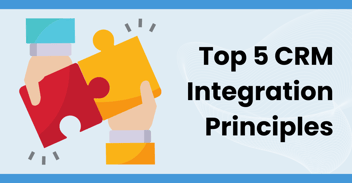In today's fast-paced digital world, businesses need more than just a way to store customer data—they need a dynamic system that connects teams, streamlines operations, and delivers a seamless customer experience. Unified CRM platforms have emerged as a powerful solution, enabling companies to consolidate all customer-related activities under one roof. By leveraging Integrated Customer Relationship Management (CRM) strategies and effective CRM Integration Solutions, businesses can improve productivity, enhance customer relationships, and make more data-driven decisions.
In this article, we’ll explore what makes Unified CRM platforms essential, the key benefits of integration, and how businesses can implement these solutions effectively.
What Are Unified CRM Platforms?
A Unified CRM Platform is a single system that integrates multiple customer engagement channels, databases, and analytics tools to provide a seamless, real-time view of customer interactions. Unlike standalone CRM solutions, unified platforms bring together sales, marketing, customer service, and other operational processes into one centralized hub.
For example, instead of sales teams working from one software and marketing teams relying on a different tool, a unified CRM connects these departments. This allows for real-time data sharing, ensuring that customer interactions remain consistent across all touchpoints.
According to a Gartner report, the CRM software market grew by 15% in 2022, highlighting the increasing demand for more integrated solutions.
Why Businesses Need Integrated Customer Relationship Management
Integrated Customer Relationship Management is more than just having a CRM system—it’s about ensuring all business processes work together cohesively. A fragmented CRM setup can lead to inefficiencies, lost sales opportunities, and poor customer experiences.
The Challenges of Disconnected CRM Systems
- Data Silos: When different teams use separate tools, customer data often gets trapped in isolated systems, leading to inconsistent information.
- Misalignment Between Departments: Without integration, marketing and sales teams might have different customer insights, leading to ineffective campaigns and missed sales opportunities.
- Lack of Automation: Manual data entry and workflow gaps reduce efficiency, leading to wasted time and errors.
A unified CRM platform eliminates these challenges by ensuring that all business functions operate under a single, integrated framework.
The Key Benefits of CRM Integration Solutions
Implementing CRM Integration Solutions offers numerous advantages, including:
Enhanced Data Accuracy and Consistency
With a unified CRM, businesses can ensure that all customer data is stored in one place, reducing errors and duplication. A study by Forbes found that companies using integrated CRM solutions improve data accuracy by 30% compared to those using multiple disconnected systems.
Improved Efficiency and Productivity
CRM integrations help automate time-consuming tasks such as lead tracking, customer follow-ups, and reporting. By reducing manual processes, employees can focus on strategic efforts like customer engagement and sales growth.
Better Customer Experience
A unified CRM platform ensures that every customer interaction is personalized and informed. When sales reps, customer support agents, and marketers have access to a customer’s full history, they can provide more relevant recommendations and solutions.
Real-Time Insights for Smarter Decision-Making
With CRM integration solutions, businesses can access real-time analytics and performance tracking. This enables executives to make data-driven decisions and quickly adjust their strategies based on customer behavior and market trends.
Scalability for Future Growth
As a business expands, managing customer relationships becomes more complex. A unified CRM is scalable, allowing companies to integrate additional tools and functionalities as needed, ensuring that growth never leads to inefficiencies.
Key Considerations When Implementing a Unified CRM Platform
Choosing the right CRM integration solutions involves evaluating various factors to ensure the system meets business needs.
Scalability and Flexibility
Ensure that the CRM system can grow with your business and integrate seamlessly with future software updates.
Integration with Existing Tools
The CRM should work smoothly with email marketing platforms, social media tools, help desk software, and financial systems.
User-Friendly Interface
If employees struggle to navigate the CRM, adoption rates will drop. A simple, intuitive interface is critical for maximizing engagement and productivity
Customization and Automation Capabilities
Look for CRM platforms that allow customization based on unique business processes. Automated workflows can significantly improve efficiency by reducing manual tasks
Robust Security Measures
With sensitive customer data being stored, ensuring data security through encryption and role-based access is vital.
Top Unified CRM Platforms to Consider in 2024
For businesses looking to implement Integrated Customer Relationship Management, here are some top CRM solutions to consider:
- Salesforce – A highly customizable CRM with powerful AI-driven insights.
- HubSpot CRM – A great option for small and mid-sized businesses, offering free and premium versions.
- Microsoft Dynamics 365 – Perfect for enterprises needing deep integrations with other Microsoft products.
- Zoho CRM – Affordable yet feature-rich, ideal for startups and growing businesses.
- Pipedrive – Best for sales teams looking for a streamlined, deal-focused CRM.
Final Thoughts: The Future of Unified CRM Platforms
The demand for unified CRM platforms continues to rise as businesses recognize the need for streamlined, data-driven customer management. By adopting Integrated Customer Relationship Management solutions, companies can improve efficiency, boost customer satisfaction, and drive long-term growth.
Investing in the right CRM integration solutions today will position your business for success in the ever-evolving digital landscape.





Leave a Comment